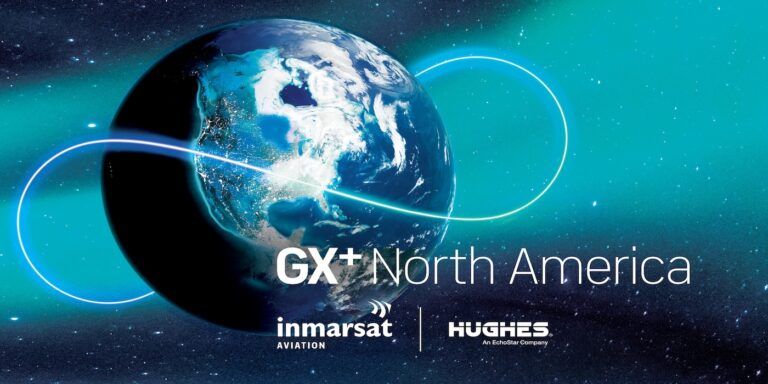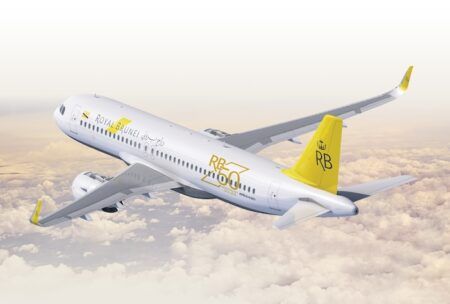Mobile satellite communications company, Inmarsat, has entered into a strategic collaboration with Hughes Network Systems (Hughes), a broadband satellite networks and services provider, to enhance inflight connectivity for North American commercial airlines.
The collaboration has resulted in the GX+ North America aviation connectivity system, which has been specifically designed for North American commercial airlines. The system integrates the capacity of the Hughes Jupiter Ka-band high-throughput satellite (HTS) constellation across North America with the worldwide coverage of Inmarsat’s Global Xpress (GX) HTS satellite network, bringing a combination of capacity, speed and reliability to the region. This capability will be useful as demand for streaming videos and audio, and video conferencing, become increasingly popular.
GX+ North America uses a Ka-band flat panel antenna from Thinkom, together with smart dual aero modem technology powered by Inmarsat’s aviation systems that intelligently choose the optimal satellite path, with no service interruption or delay for passengers.
According to Inmarsat, the solution underscores its strategic vision as it looks past the pandemic and into the future needs of commercial airline fleets in North America, whose passengers will require ubiquitous connectivity as they return to the skies.
The ultra-high capacity of GX+ North America will make it possible for North American airlines to meet increasing passenger demand, including the surge in traffic expected from free-of-charge inflight wi-fi. Today, satellite networks are trying to serve thousands of commercial aircraft in North America, the world’s busiest airspace, and as they reach capacity, airlines can struggle to meet the demands of data-hungry passengers who want reliable, affordable, high-speed wi-fi while on board.
GX+ North America can cover any route worldwide through the GX global network — whether to Hawaii, Canada, Bermuda, the Caribbean, across the Gulf of Mexico, to Central and South America, across the Atlantic or even to the most extreme northern latitudes.
“It is truly a ‘no compromise’ solution for airlines that no other service provider can offer. We’ve also ensured the transition path for airlines upgrading from other connectivity providers is simple, quick and cost efficient,” stated Rupert Pearce, CEO of Inmarsat.
GX+ North America will be provided and managed end-to-end by Inmarsat. Prototype flights are expected to start later this year, with commercial availability scheduled for 2021.
Looking further ahead, as commercial aviation returns to growth and aircraft return to the skies, Inmarsat and Hughes will expand the service. Over the next four years alone, the Hughes and Inmarsat combined constellation of seven GX and Jupiter satellites will more than double to a total of 15 spacecraft. These additional satellites include the Hughes ultra-high capacity Jupiter 3 satellite and Inmarsat’s seven advanced, fully-funded next-generation GX satellite payloads (6A, 6B, 7, 8, 9, 10A & 10B), which will enhance capacity and coverage throughout the world, including the Arctic.





